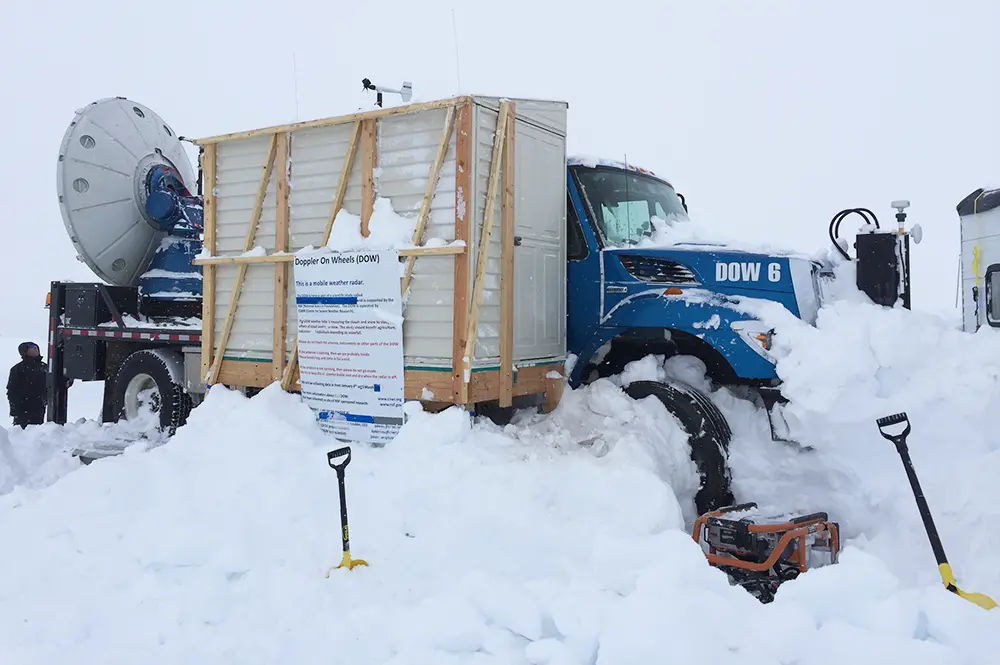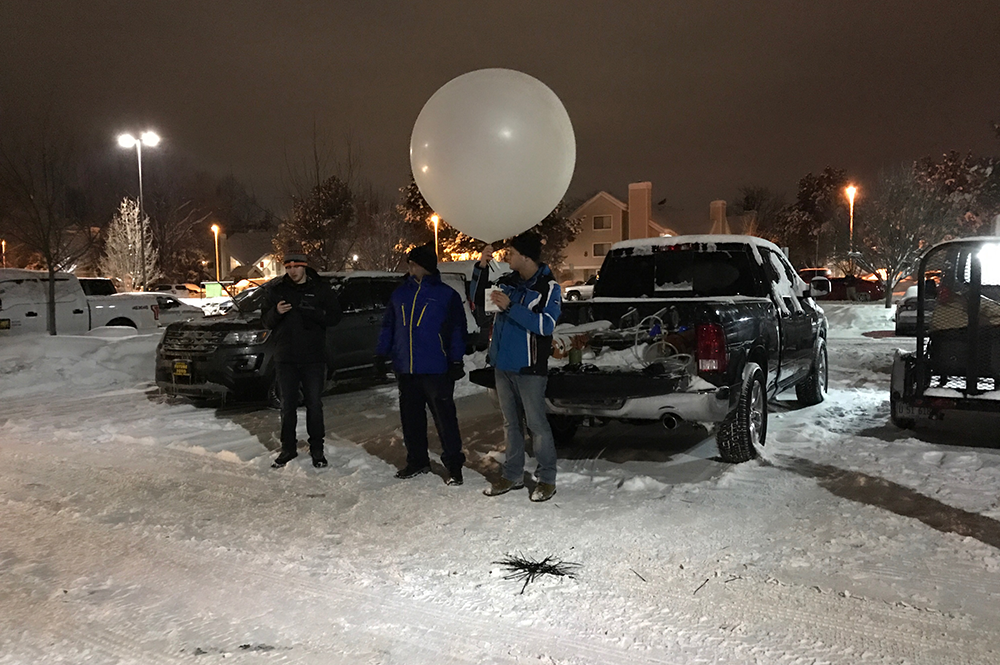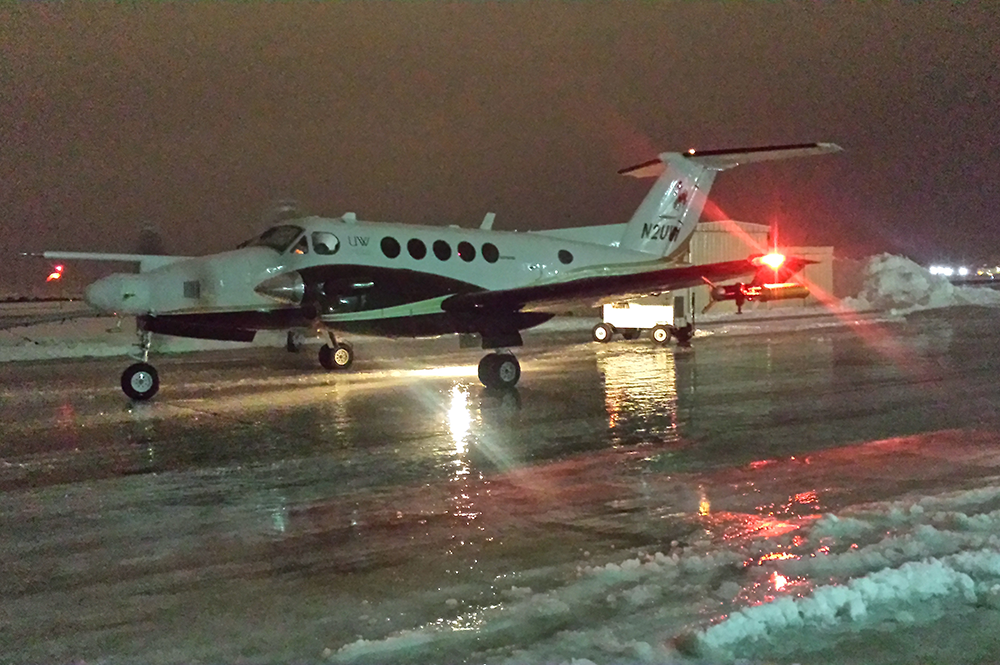
Now and then a science story comes along that challenges what you’ve been told since you were a kid. This is one of them. For starters, water doesn’t necessarily freeze below 32 degrees Fahrenheit. It’s been recorded in liquid form in clouds as cold as 22 degrees below zero.
This scientific phenomenon is more than a rebuttal to popular belief—it’s the basis for a research effort underway by Illinois and several other institutions this winter that runs contrary to another old mantra: You can’t control the weather. Bob Rauber, professor of atmospheric sciences at Illinois, and his students are learning more about how to make it snow.
The team is part of SNOWIE (Seeded and Natural Orographic Wintertime Clouds – the Idaho Experiment), a cloud seeding project in southwest Idaho that scientists hope will teach them more about how to put more snow on the ground. More snowfall in the mountains would translate into more water for hydropower, irrigation, and other consumption in dry areas of the country.
“We want to convert water droplets in the cloud to ice crystals before the cloud sweeps over the mountains,” said Rauber, who is helping oversee the project, including Illinois operations.
Funded through the National Science Foundation, SNOWIE is designed to expand knowledge about cloud seeding, a process by which silver iodide is released into the clouds, either from the air or via ground-based generators. The presence of silver iodide, scientists believe, helps start the process by which liquid water turns into snow.

Preparing a Doppler on wheels that is operating from a remote moutaintop location requires a lot of shoveling. The machine is being used to measure the effect of silver iodide being released in clouds. (Photo by Karen Kosiba.)
Precipitation in winter storms generally develops when ice crystals form on natural ice nuclei, such as dust particles, and grow. In many storms, however, the lack of natural ice nuclei active at warmer temperatures results in an inefficient precipitation process, as the formation of an ice crystal is something like a chain reaction. Without something solid to trigger the formation of a crystal lattice—which eventually turns into snow—water can remain in a liquid state (and airborne) in remarkably cold conditions.
In addition, weak updrafts in these clouds and narrow cloud droplet distributions limit the impacts of any ice processes to multiply.
The silver iodide, Rauber explained, is considered an effective ingredient to help turn that super-cooled water into snow. In the case of the SNOWIE Project, the silver iodide is being released by an aircraft funded through Boise-based Idaho Power Company (which is also paying for some instrumentation in the project), while another research aircraft from the University of Wyoming and special Doppler radars placed on a mountaintop are taking measurements to understand the impact of the silver iodide.
Illinois has provided a rawinsonde system, which is basically a sophisticated weather balloon system to measure pressure, temperature, moisture, and wind speed and direction. Graduate students from Illinois, assisted by undergraduate students, are launching the balloons to record data during the research. The project, which began this month, will continue through mid-March, and it has already detected unequivocal signatures of cloud seeding effects with its airborne and mountaintop radars.
The work is heavily dependent on weather.
“That’s the crazy thing about studying weather,” said Rauber. “It’s not at all like a laboratory.”

A King Air from the University of Wyoming is being used to measure the effects of silver iodide during the SNOWIE cloud seeding project. (Photo by Matt Burkhart.)
The project also is receiving assistance from researchers at the University of Colorado and the National Center for Atmospheric Research’s Research Applications Laboratory. Jeff French, a professor of atmospheric sciences at the University of Wyoming, said they will be observing during a variety of both seeded and natural conditions, not just during storms.
“Part of understanding seeding is understanding the natural process of the storm,” he said. “It’s important to go out in the (storm’s) evolution to take measurements when seeding is not occurring.”
He added: “Results from SNOWIE are expected to provide a new and important understanding of cold-season precipitation—both naturally and that augmented through cloud seeding—and will have an impact throughout the American West, a region that increasingly suffers from drought and water shortage.”
Cloud seeding has been studied since the 1950s, Rauber said, but for years the research equipment was not sophisticated enough, and results did not withstand scrutiny very well. Until recently, the federal government withdrew funding from cloud seeding research, but it was carried on by western states and private companies. Growing environmental concerns and water shortages renewed interest in cloud seeding in recent years.
It’s not a new topic for Rauber, however. Cloud seeding was the subject of his research as he earned his doctoral degree in the 1980s.
“Essentially, I’m doing my PhD all over again,” he said, with a laugh. “But I’m doing it with a heck of a lot better equipment. Hopefully I can prove I was right.”